The antenna connector is an electronic connector used to connect radio frequency equipment and cables. Its main function is to transmit high-frequency signals. The connector has excellent impedance matching characteristics, which ensures that signal reflection and loss are minimized during transmission between the connector and the cable. They usually have good shielding properties to prevent external electromagnetic interference from affecting signal quality. Common antenna connector types include SMA, BNC, N-type, TNC, etc., which are suitable for different application requirements.
This article will also introduce people to several commonly used connectors:
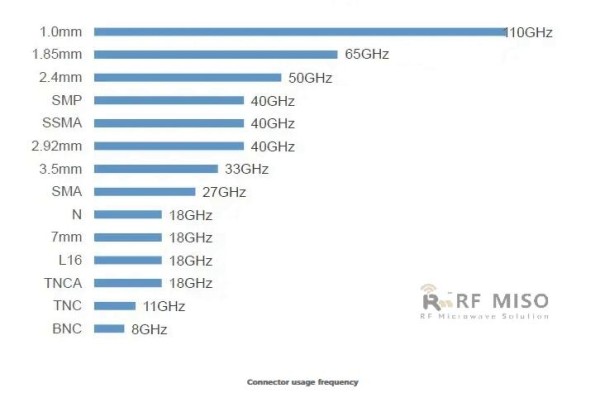
SMA Connector
The SMA type RF coaxial connector is a RF/microwave connector designed by Bendix and Omni-Spectra in the late 1950s. It was one of the most commonly used connectors at that time. Originally, SMA connectors were used on 0.141″ semi-rigid coaxial cables, primarily used in microwave applications in the military industry, with Teflon dielectric fill. Because the SMA connector is small in size and can operate at higher frequencies (the frequency range is DC to 18GHz when mated to semi-rigid cables, and DC to 12.4GHz when mated to flexible cables), it is rapidly gaining popularity. Some companies are now able to produce SMA connectors around DC~27GHz. Even the development of millimeter wave connectors (such as 3.5mm, 2.92mm) considers mechanical compatibility with SMA connectors.
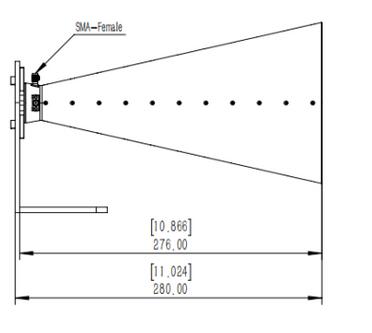
BNC Connector
The full name of BNC connector is Bayonet Nut Connector (snap-fit connector, this name vividly describes the shape of this connector), named after its bayonet mounting locking mechanism and its inventors Paul Neill and Carl Concelman. is a common RF connector that minimizes wave reflection/loss. BNC connectors are typically used in low to mid-frequency applications and are widely used in wireless communication systems, televisions, test equipment, and RF electronic equipment. BNC connectors were also used in early computer networks. The BNC connector supports signal frequencies ranging from 0 to 4GHz, but it can also operate up to 12GHz if a special high-quality version designed for this frequency is used. There are two types of characteristic impedance, namely 50 ohms and 75 ohms. 50 ohm BNC connectors are more popular.
N type Connector
The N-type antenna connector was invented by Paul Neal at Bell Labs in the 1940s. Type N connectors were originally designed to meet the needs of the military and aviation fields for connecting radar systems and other radio frequency equipment. The N-type connector is designed with a threaded connection, providing good impedance matching and shielding performance, and is suitable for high power and lower frequency applications. The frequency range of Type N connectors usually depends on the specific design and manufacturing standards. Generally speaking, N-type connectors can cover the frequency range from 0 Hz (DC) to 11 GHz to 18 GHz. However, high-quality N-type connectors can support higher frequency ranges, reaching over 18 GHz. In practical applications, N-type connectors are mainly used in low to medium frequency applications, such as wireless communications, broadcasting, satellite communications and radar systems.
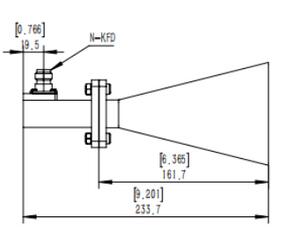
TNC Connector
The TNC connector (Threaded Neill-Concelman) was co-invented by Paul Neill and Carl Concelman in the early 1960s. It is an improved version of the BNC connector and uses a threaded connection method. The characteristic impedance is 50 ohms, and the optimal operating frequency range is 0-11GHz. In the microwave frequency band, TNC connectors perform better than BNC connectors. It has the characteristics of strong shock resistance, high reliability, excellent mechanical and electrical properties, etc., and is widely used in radio equipment and electronic instruments to connect RF coaxial cables.
3.5mm Connector
The 3.5mm connector is a radio frequency coaxial connector. The inner diameter of the outer conductor is 3.5mm, the characteristic impedance is 50Ω, and the connection mechanism is 1/4-36UNS-2 inch thread. In the mid-1970s, the American Hewlett-Packard and Amphenol companies (mainly developed by HP Company, and early production was carried out by Amphenol Company) launched a 3.5mm connector, which has an operating frequency of up to 33GHz and is the earliest radio frequency that can be used in the millimeter wave band. One of the coaxial connectors. Compared with SMA connectors (including Southwest Microwave's "Super SMA"), 3.5mm connectors use air dielectric, have thicker outer conductors than SMA connectors, and have better mechanical strength. Therefore, not only the electrical performance is better than that of SMA connectors, but the mechanical durability and performance repeatability are also higher than that of SMA connectors, making it more suitable for use in the testing industry.
2.92mm Connector
The 2.92mm connector, some manufacturers call it 2.9mm or K-type connector, and some manufacturers call it SMK, KMC, WMP4 connector, etc., is a radio frequency coaxial connector with an outer conductor inner diameter of 2.92mm. Characteristics The impedance is 50Ω and the connection mechanism is 1/4-36UNS-2 inch thread. Its structure is similar to the 3.5mm connector, just smaller. In 1983, Wiltron senior engineer William.Old.Field developed a new 2.92mm/K-type connector based on summarizing and overcoming previously introduced millimeter wave connectors (K-type connector is the trademark). The inner conductor diameter of this connector is 1.27mm and can be mated with SMA connectors and 3.5mm connectors. The 2.92mm connector has excellent electrical performance in the frequency range (0-46) GHz and is mechanically compatible with SMA connectors and 3.5mm connectors. As a result, it quickly became one of the most widely used mmWave connectors.
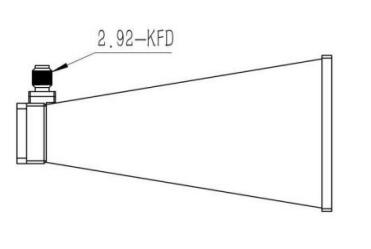
2.4mm Connector
The development of the 2.4mm connector was jointly carried out by HP (the predecessor of Keysight Technologies), Amphenol and M/A-COM. It can be thought of as a smaller version of the 3.5mm connector, so there is a significant increase in maximum frequency. This connector is widely used in 50GHz systems and can actually work up to 60GHz. In order to solve the problem that SMA and 2.92mm connectors are prone to damage, the 2.4mm connector is designed to eliminate these shortcomings by increasing the thickness of the outer wall of the connector and reinforcing the female pins. This innovative design allows the 2.4mm connector to perform well in high-frequency applications.
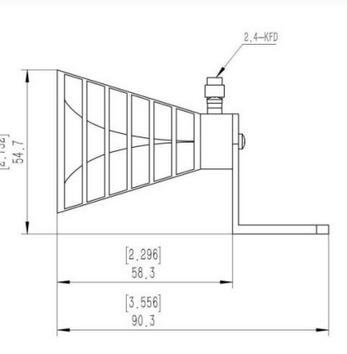
The development of antenna connectors has evolved from simple thread designs to multiple types of high-performance connectors. With the advancement of technology, connectors continue to pursue the characteristics of smaller size, higher frequency and larger bandwidth to meet the changing needs of wireless communication. Each connector has its own characteristics and advantages in different application scenarios, so choosing the right antenna connector is very important to ensure the quality and stability of signal transmission.
Media Contact
Company Name: Chengdu RF Miso Co., Ltd.
Email: Send Email
Country: China
Website: https://www.rf-miso.com/






